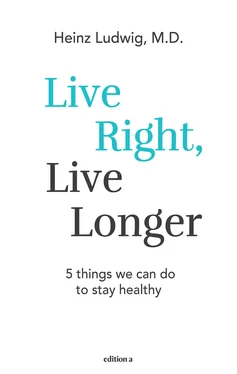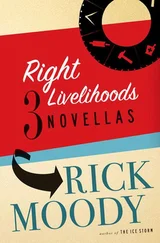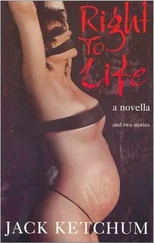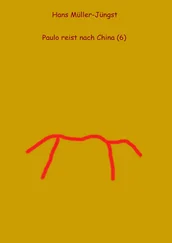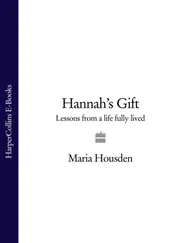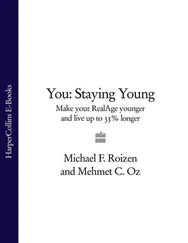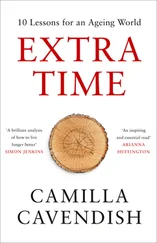Some forms of cancer, such as stomach cancer, have recently become less frequent, whereas others, such as lung cancer, are more frequent. The reduced frequency of stomach cancer presumably has to do with the improved quality of food. Let’s take Europe. In the years immediately after the Second World War, the luxury that today’s throw-away society allows itself was unthinkable.
At the time, many people ate moldy or otherwise spoiled bread when there was nothing else available. They also ate other food that was spoiled simply because the refrigeration was not as good as it is today. The ice man brought ice in blocks to keep food cool in the icebox (in the U.S., too) until the ice melted and had to be replaced, and there was no such thing as a use-by or best-before date on the packaging. Luckily, much has changed since then. Eating moldy and otherwise spoiled food increases the risk of developing stomach cancer, as does the consumption of cured meat, which back then was usual and frequent.
In contrast, lung cancer has become more frequent. This is a result of the fact that more women are smoking than ever before. I do understand it when, for example, people who have to deal with considerable stress find relief in smoking: Besides smoking’s innumerable negative effects on the body, there are also positive effects. It reduces the experience of stress, strengthens cardiovascular activity, makes one more alert, lifts one’s spirits, and encourages communication. We would have to invent something that has the same positive effects as smoking without at the same time harming the body. The connection between smoking and the increased risk of cancer, not only of the lung, has been proven beyond any doubt by the cancer research of recent decades.
Nonetheless, far fewer people die of cancer than of cardiovascular disease, which results from the high frequency of hypertension, high levels of blood fats, and overweight. Another reason for the difference lies in the progress made in cancer treatments. In a number of forms of cancer it has been possible to find a cure or to transform the cancer from a fatal to a chronic illness.
We expect further rapid progress, to which the correction of defects in the steering mechanism of cancer cells as well as immunotherapy and cell therapy will contribute. This rapid progress will, in addition, be supported by the new quality of data processing, which can be summed up in the concept of big-data mining.
Still, the question of what each and every one of us can do personally to stay healthy is of major relevance. Certainly, there are factors in all illnesses on which we have little or no influence, as, for example, our genetic makeup or environmental factors, which I will go into in the course of the book. There are also factors, however, that we can very well influence. We have available to us a range of actions we can take, and we would do well to take them. It sometimes depresses me to see how people irresponsibly do without the knowledge that is available, either because they haven’t made the effort to look for it or because they ignore it when they do have it.
I started thinking in a more systematic fashion about the actions that are available to us, because patients frequently asked me what they themselves could do beyond the proposed treatment. It became clear to me that there were, in fact, different things they could do to support the medical treatment and thereby improve their prognosis and their quality of life. At that point, I started looking at the scientific basis for the different activities that came under consideration. And right then and at the very top of the list of meaningful activities I wrote the word »Love«. Inspired by cases such as those of Martha Allen and Robert Tucker, I mean not only love between two persons but rather the entire scope of our interpersonal relationships and our social integration, and in addition, our love of and devotion to a given task, to our work, or to a hobby.
In the course of time, my list of sensible activities grew, without at the same time getting out of hand. That is because the list can basically be reduced to five elements that I not only warmly recommend to my patients but also suggest to healthy individuals as life maxims. The things that patients can do to regain their health or at least to improve their prognosis are the same as those that the healthy can do to stay healthy.
These five activities can be deduced from many scientific studies that are often very comprehensive, carried out by physicians all over the world. Their results are in conformity with my own observations and insights. Therefore, these five activities mirror the current state of scientific knowledge as well as my personal experiences in patient treatment, from which I have for a long time been continually and systematically drawing my conclusions.
I have always asked myself what it is that makes us the persons we are. How important are our genetic makeup, our life experiences, our surroundings?
When I was studying, immunology was considered the most promising medical research area, comparable today to molecular biology or modern genetics. I wanted then to know more about the biological and biochemical fundamentals of our bodily defenses against pathogens such as bacteria, viruses and fungi. I was also particularly interested in the so-called autoimmune diseases, in which our own bodily defense system turns against components of our organism. How does this system, whose central task it is to keep us healthy, function? What strengthens it and what weakens it?
At the time, these fundamental questions were an enormous field that was barely researched. That spoke to my ambitions and my curiosity. I therefore applied for a research assistantship at the Vienna Institute of Immunology, which had shortly before been founded as the first German-language institute in this field.
I was accepted. After having familiarized myself thoroughly with the scientific method, I was very soon given projects of my own. Three years later I was ready to start my clinical training in internal medicine. At the time there were two university departments for internal medicine that were in competition with each other. That can be good, of course, since competition is stimulating.
A question at the time was whether type-1 diabetes (the form in which little or no insulin is produced and which usually develops in childhood) was the result of a viral infection with a subsequent autoimmune reaction. Having learned at the Institute of Immunology a variety of then modern research techniques, I was of interest to both departments. In consequence, I had the privilege at the age of 27 of being able to make the choice myself.
Because it is directly connected with the message of this book, I describe in the following how I made my decision. Before my interview in the first of the two departments, the secretary of the department head asked me, »How much time do you need? Five minutes… or ten?« That bothered me rather a lot. But in the conversation itself I sensed that the department worked very efficiently and professionally. That impressed me. But because I wanted to be able to compare, I also applied to the other department. The physician responsible for recruitment of medical staff greeted me in friendly fashion. He explained his research area and also touched on the organization of the department. In the end, he gave me half an hour of his time.
Both departments were very promising. But I made my decision not on the basis of the scientific activities and clinical successes of either department – and in any event, I didn’t know what they were in detail. Rather, and without having thought the issue through to the end, it seemed to me even then that the interpersonal aspect, which will be covered more fully later in this book, was more important. The head of the first department might have been the better scientist, but the conversation in the second department, which I experienced as friendly and interested, motivated my choice.
Читать дальше
